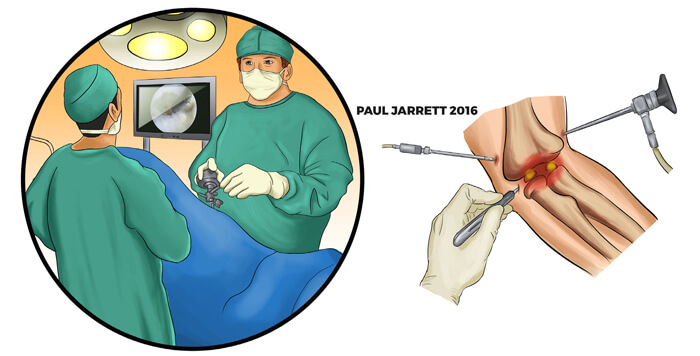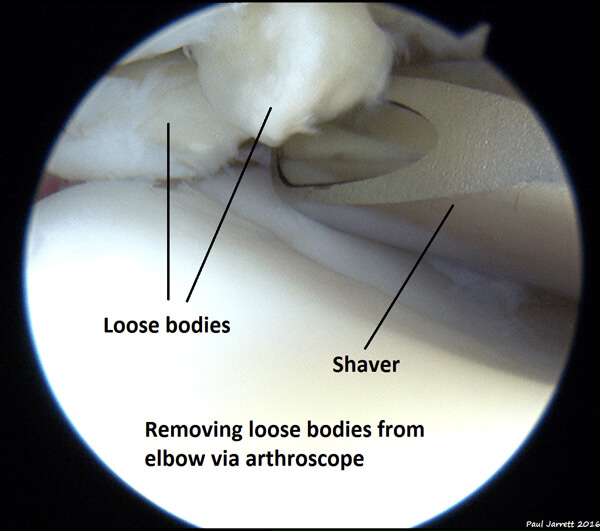
Elbow Arthritis
There are several forms of arthritis. The most common form of arthritis in the elbow is osteoarthritis, which is what many people might think of as “wear and tear arthritis”.
There are many less common types of arthritis, including rheumatoid arthritis, also commonly involving the elbow in people with these conditions. In osteoarthritis, the joint surfaces lose part of their smooth cartilage leaving areas of bone-on-bone. Extra prominent areas of bone can develop at the edge of the joint surfaces. These are called osteophytes, and can also limit the motion in the elbow. Osteophytes can break off and float free within the elbow causing pain, stiffness and locking (the elbow motion is restricted in one or both directions, for a temporary period, because something feels like it is stuck in the joint). Osteoarthritis is common especially in people who have undertaken heavy labour for many years. Some people develop osteoarthritis in their elbows but get little in the way of problem symptoms. One feature of osteoarthritis is a progressive degree of loss of the ability to fully straighten the elbow. This can come on so slowly without pain or function problems, that sufferers do not even realise they have lost some motion. Other people may suffer from pain, stiffness, weakness and locking of the elbow.
How can you treat arthritis in the elbow?
Most people with mild elbow osteoarthritis will find little benefit from treatment. Others find that painkillers when required and limiting activities that cause symptoms are two practical methods of managing symptoms.
If your arthritis is more troublesome at times steroid injections, physiotherapy or occupational therapy can be useful, but its application is much less relevant compared to hand and shoulder problems. If stiffness or pain is marked, then arthroscopic removal of loose bodies, portions of the osteophytes and at the time some of the elbow joint capsule, can improve your elbow function and symptoms. If elbow arthritis is very bad, elbow replacement surgery may be considered for a limited group of people.
Elbow Arthoscopy
Usually day surgery involving general anaesthetic. Some small incisions (wounds) are made around the elbow to allow the telescope and shavers to remove the affected tissue. Usually, recovery is relatively rapid with a reasonable amount of motion returning within several days. The range of motion is usually returned to pre-operation levels within four weeks and often with improvement in motion by that time also. There are no sutures for removal, and a bulky bandage is worn for two days, with small stick dressings after that until ten days post-surgery.
If a small open wound (arthrotomy) is required, this slows down recovery by some weeks. The elbow arthroscopy or arthrotomy does not remove the original underlying problem but can improve matters by removing bone and tissue which are restricting function, and when appropriate may give good results, but elbow arthroscopy will not necessarily reduce the progression of arthritis in the long term. The main risks of elbow arthroscopy are infection and nerve injury, both of which are uncommon but potentially serious.
Photo of loose bodies being removed arthroscopically in the elbow
